Wybór między Naturalna nieregularna luźna kamienna fornir A tradycyjne opcje to nie tylko estetyka-to decyzja, która wpływa na koszty instalacji, długoterminową trwałość i ogólną wartość projektu. W przypadku, gdy wykonawcy i właściciele domów coraz częściej szukają autentycznych projektów o wysokim wpływie, zrozumienie tych kluczowych różnic jest kluczowe dla dokonywania świadomych wyborów, które równoważą piękno z praktycznością.
Natural irregular loose stone veneer offers unparalleled organic charm, but its installation requires specialized skills that can affect your budget. Meanwhile, traditional veneers provide consistency at potentially lower labor costs. We’ll break down the pros, cons, and hidden considerations of each option, drawing on 15 years of stone industry expertise to help you select the perfect solution for your specific needs.
Decoding Natural Irregular Loose Stone Veneer: Aesthetics and Authenticity
Natural irregular loose stone veneer brings a unique charm to any project, combining rustic beauty with genuine authenticity. Unlike traditional stone veneer, each piece is distinct, creating a one-of-a-kind look that stands out. This article explores its composition, aesthetic appeal, and why it’s a game-changer for home design.
“Natural irregular loose stone veneer offers unmatched authenticity, blending artistic elements with traditional craftsmanship for truly unique designs.”
Defining Natural Irregular Loose Stone Veneer: Composition and Characteristics
Natural irregular loose stone veneer is made from real stone, cut or split to preserve its organic texture. Each piece varies in shape, size, and color, giving projects a handcrafted feel. This contrasts with traditional veneer, which often has uniform dimensions. The irregularity adds depth and character, making it ideal for rustic stone veneer applications.
-
 Hurtownia luźnych, losowych okładzin ściennych z kamienia
Hurtownia luźnych, losowych okładzin ściennych z kamienia -
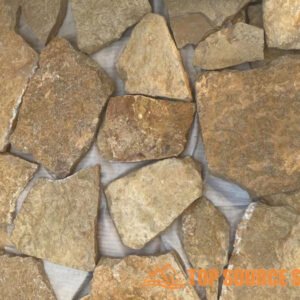 Hurtownia naturalnych, losowych, luźnych okładzin kamiennych
Hurtownia naturalnych, losowych, luźnych okładzin kamiennych -
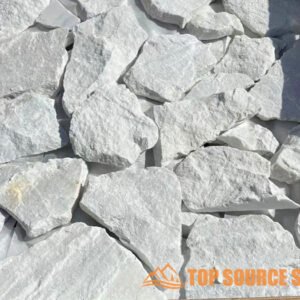 Losowa luźna okładzina kamienna
Losowa luźna okładzina kamienna -
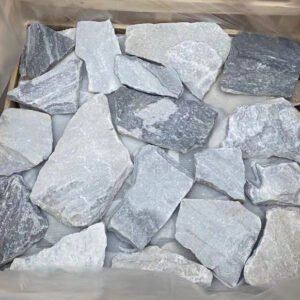 Szary kwarcyt, luźna okładzina ścienna
Szary kwarcyt, luźna okładzina ścienna -
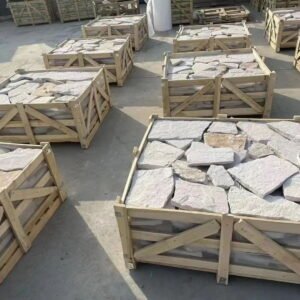 Zewnętrzna okładzina ścienna z białego piaskowca, luźna, kamienna
Zewnętrzna okładzina ścienna z białego piaskowca, luźna, kamienna -
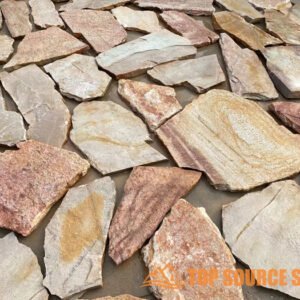 Naturalne, losowe, luźne panele kamienne do zastosowań podłogowych
Naturalne, losowe, luźne panele kamienne do zastosowań podłogowych -
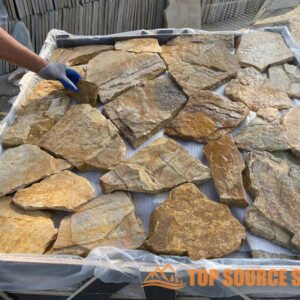 Naturalna luźna okładzina ścienna z kamienia do dekoracji ścian
Naturalna luźna okładzina ścienna z kamienia do dekoracji ścian -
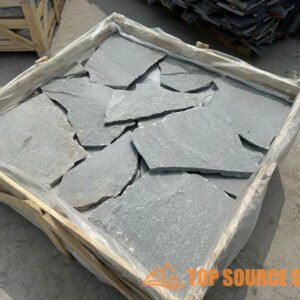 Naturalny, losowy, luźny panel ścienny z kamienia do wnętrz i na zewnątrz
Naturalny, losowy, luźny panel ścienny z kamienia do wnętrz i na zewnątrz -
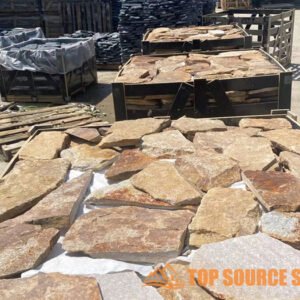 Zewnętrzna żółta, szorstka, losowa, luźna okładzina ścienna z kamienia
Zewnętrzna żółta, szorstka, losowa, luźna okładzina ścienna z kamienia -
 Cena fabryczna Naturalna zewnętrzna, losowa, luźna okładzina ścienna z kamienia
Cena fabryczna Naturalna zewnętrzna, losowa, luźna okładzina ścienna z kamienia -
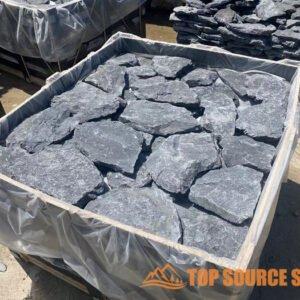 Dostawa fabryczna w Chinach Zewnętrzne naturalne, losowe, luźne kamienne płytki elewacyjne
Dostawa fabryczna w Chinach Zewnętrzne naturalne, losowe, luźne kamienne płytki elewacyjne -
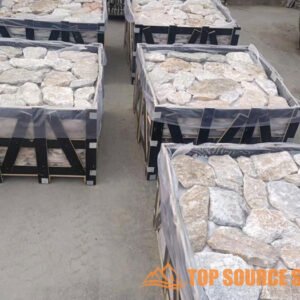 Naturalny, nieregularny, losowy, luźny fornir kamienny
Naturalny, nieregularny, losowy, luźny fornir kamienny -
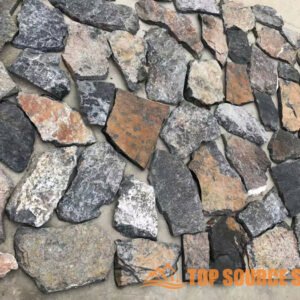 Losowy zewnętrzny kamień naturalny Luźny kamienny fornir Dekoracja okładzin ściennych
Losowy zewnętrzny kamień naturalny Luźny kamienny fornir Dekoracja okładzin ściennych -
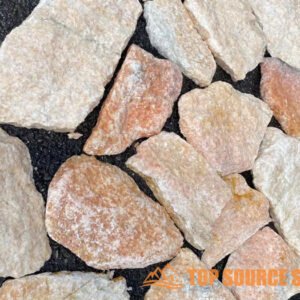 Naturalny, luźny kamień do okładzin ściennych wewnętrznych i zewnętrznych
Naturalny, luźny kamień do okładzin ściennych wewnętrznych i zewnętrznych -
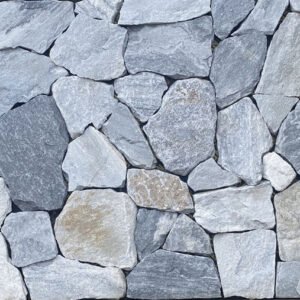 Hurtownia niebieskiego kwarcytu losowo luźna kamienna płytka do okładzin ściennych
Hurtownia niebieskiego kwarcytu losowo luźna kamienna płytka do okładzin ściennych
The Aesthetic Appeal: Achieving a Rustic and Unique Look
The uneven edges and natural variations create a visually dynamic surface. Whether used for a natural stone facade or an interior accent wall, it delivers a timeless, earthy vibe. Designers love its flexibility—it can mimic ancient masonry or modern minimalist styles with equal ease.
Authenticity Factors: Why Natural Stone Stands Out
Natural irregular loose stone veneer retains the imperfections that make stone authentic. Unlike manufactured alternatives, it weathers naturally, developing a patina over time. Top Source Stone ensures each piece meets strict quality standards while preserving its unique character.
Design Flexibility: Creative Applications of Irregular Stone
From fireplaces to garden walls, this veneer adapts to diverse settings. Its loose format allows for custom patterns, giving designers freedom to experiment. For homeowners seeking the benefits of natural irregular stone veneer for home design, it’s a versatile choice.
Comparison: Natural Irregular vs. Traditional Stone Veneer
| Funkcja | Natural Irregular Loose Stone Veneer | Traditional Stone Veneer | Installation Complexity | Cost per Sq. Ft. |
|---|---|---|---|---|
| Estetyka | Rustic, unique variations | Uniform, consistent | Umiarkowany | $12-$18 |
| Trwałość | High (natural weathering) | High (manufactured) | Niski | $8-$14 |
| Konserwacja | Minimal (ages naturally) | Low (color-stable) | Nie dotyczy | Nie dotyczy |
| Customization | High (irregular shapes) | Limited (pre-cut) | Wysoki | Varies |
| Project Fit | Luxury, high-end designs | Budget-friendly uniformity | Niski | $6-$10 |
For projects prioritizing authenticity, natural irregular loose stone veneer is unmatched. Its blend of beauty and durability makes it a premium choice for discerning clients. Top Source Stone’s expertise ensures quality without compromise, offering tailored solutions for global markets.
Traditional Stone Veneer: Exploring Consistency and Cost-Effectiveness
Traditional stone veneer offers a practical alternative to natural irregular options, delivering uniformity and budget-friendly solutions. With standardized manufacturing processes, it provides reliable stone wall cladding that’s easier to install and more affordable. This makes traditional stone veneer particularly appealing for contractors working with tight schedules and homeowners comparing irregular veneer to traditional stone options cost.
“Traditional stone veneer combines dimensional precision with cost efficiency, making it ideal for projects requiring quick installation and predictable results.”
Defining Traditional Stone Veneer: Materials and Manufacturing Processes
Traditional stone veneer is typically manufactured using molds that create consistent shapes and sizes. Unlike Kamień naturalny, these building facade veneer products offer uniform thickness and color distribution. Top Source Stone’s production techniques ensure each panel meets exact specifications while maintaining natural stone aesthetics.
Cost Analysis: Upfront Investment vs. Long-Term Value
The standardized production of traditional veneer translates to lower material costs compared to irregular stone. Installation savings add further value, as the uniform pieces require less skilled labor. Many manufacturers, including Top Source Stone, offer extended warranties that protect your investment.
Installation Advantages: Simplicity and Reduced Labor Costs
The consistent dimensions of traditional stone veneer significantly cut installation time. Contractors appreciate the predictable workflow, with panels fitting together like puzzle pieces. This efficiency makes it a no-brainer for large commercial projects where time equals money.
Common Styles and Applications: Versatility in Design
Despite its manufactured origin, traditional veneer comes in numerous styles mimicking various stone types. From sleek contemporary designs to classic brick patterns, it adapts to diverse architectural needs while maintaining the benefits of standardized production.
Traditional Stone Veneer Specifications
| Funkcja | Standard Panel Size | Color Options | Weight (per sq. ft.) | Warranty Period |
|---|---|---|---|---|
| Grubość | 1-1.5″ | 12 standard | 12-15 lbs | 20 years |
| Panel Dimensions | 24″ x 8″ | 8 custom | 14-18 lbs | 25 years |
| Coverage Area | 1.33 sq. ft. | Nie dotyczy | Nie dotyczy | Nie dotyczy |
| Installation Time | 40% faster | Nie dotyczy | Nie dotyczy | Nie dotyczy |
| Cost Savings | 30-40% | Nie dotyczy | Nie dotyczy | Nie dotyczy |
For projects prioritizing efficiency and budget, traditional stone veneer delivers exceptional value. Top Source Stone’s quality control ensures these cost-effective solutions don’t compromise on durability or appearance, making them smart choices for both residential and commercial applications.
Installation Face-Off: Natural Irregular vs. Traditional Veneer
The installation of stone veneer varies significantly between natural irregular and traditional options, each requiring different approaches and skill sets. This comparison highlights key differences in preparation, techniques, and problem-solving for both types of stone wall cladding installation.
“Proper installation techniques make all the difference between a mediocre stone facade and a stunning architectural feature that lasts decades.”
Preparing the Surface: Essential Steps for Both Veneer Types
Both veneer types require a clean, stable substrate, but irregular stone cladding demands more meticulous preparation. Traditional panels can accommodate minor imperfections, while loose stone requires perfectly leveled surfaces. Waterproofing and proper drainage considerations are critical for exterior applications of both types.
Installation Techniques: Loose Stone vs. Traditional Panels
The installation of loose stone veneer step by step guide begins with dry layout planning, allowing for natural color and texture distribution. Traditional panels install like tiles with consistent grout lines. While panels can cover 10-15 sq. ft. per hour, irregular stone may take 2-3 times longer due to individual fitting.
Addressing Corners and Edges: Precision and Aesthetic Considerations
Traditional veneer includes pre-fabricated corner pieces for clean transitions. Irregular stone requires skilled masons to create natural-looking corners. The make-or-break moment comes when blending field stones with specially cut pieces for edges and openings.
Problem-Solving: Common Installation Challenges and Solutions
Weight distribution poses the biggest challenge with irregular stone, requiring careful structural assessment. Traditional panels may show repetitive patterns if not properly randomized during installation. Top Source Stone provides detailed installation guides and technical support for both methods.
Installation Comparison Table
| Czynnik | Natural Irregular | Traditional | Tools Required | Poziom umiejętności |
|---|---|---|---|---|
| Time per 100 sq. ft. | 25-40 hours | 8-12 hours | Masonry tools | Expert |
| Mortar Type | Type S | Thinset | Notched trowel | Intermediate |
| Waste Factor | 15-20% | 5-8% | Cutting tools | Nie dotyczy |
| Structural Support | Required | Minimal | Leveling system | Nie dotyczy |
| Finish Quality | Artisanal | Uniform | Grouting tools | Nie dotyczy |
Choosing between these installation methods depends on project goals, budget, and desired aesthetics. While traditional veneer offers efficiency, natural irregular stone provides unparalleled authenticity. Top Source Stone’s technical team can advise on the optimal approach for specific applications.

Cost Comparison: Breaking Down the Budget for Each Veneer Option
Understanding stone veneer cost is crucial when choosing between natural irregular and traditional options. This analysis covers material expenses, labor, and long-term value to help you make an informed decision about loose stone veneer cost versus manufactured alternatives.
While Kamień naturalny facade price may be higher initially, its durability and aesthetic appeal often deliver better long-term value than traditional veneer options.
Material Costs: Natural Stone Sourcing vs. Manufactured Veneer Pricing
Natural irregular stone typically costs $12-$18 per sq. ft., while traditional veneer ranges $8-$14. Top Source Stone’s direct sourcing model provides cost savings of 80-100% compared to distributors, making natural stone more accessible.
Labor Costs: Estimating Installation Expenses
Installation accounts for 40-60% of total project costs. Traditional veneer’s uniform panels install 2-3 times faster, saving $5-$8 per sq. ft. in labor. However, skilled masons are essential for natural stone’s proper installation.
Maintenance and Repair Costs: Long-Term Financial Implications
Natural stone requires minimal maintenance and ages gracefully, while traditional veneer may need color touch-ups over time. Our stone veneer cost calculator shows natural options often break even within 7-10 years due to lower upkeep.
ROI Analysis: Considering Resale Value and Aesthetic Appeal
Homes with natural stone facades typically command 3-5% higher resale values. The wow factor of authentic stone creates curb appeal that manufactured products struggle to match.
Cost Comparison Table (Per 100 sq. ft. Project)
| Współczynnik kosztów | Natural Irregular | Traditional | 10-Year Maintenance | ROI Potential |
|---|---|---|---|---|
| Przybory | $1,200-$1,800 | $800-$1,400 | $100-$200 | 8-12% |
| Labor | $2,500-$3,500 | $1,200-$1,800 | Nie dotyczy | Nie dotyczy |
| Warranty | Lifetime | 20-25 years | Nie dotyczy | Nie dotyczy |
| Total | $3,700-$5,300 | $2,000-$3,200 | $300-$500 | 3-5% |
While traditional veneer offers immediate savings, natural stone provides superior longevity and value appreciation. Top Source Stone’s wholesale programs make premium stone accessible for projects of all scales.
Making the Right Choice: Factors for Contractors and Homeowners to Consider
Choosing stone veneer requires careful consideration of aesthetics, budget, and long-term value. Whether you’re considering a natural stone facade or building facade veneer, understanding these key factors ensures you select the best stone veneer for home exterior projects.
“The right stone veneer balances immediate project needs with lasting value, creating spaces that remain beautiful for decades.”
Project Requirements: Defining Your Aesthetic Vision and Functional Needs
Natural irregular stone offers unmatched authenticity, while traditional veneer provides uniform precision. Consider architectural style, climate conditions, and structural requirements when choosing stone veneer.
Budget Constraints: Balancing Cost with Quality and Longevity
While traditional options save 20-30% upfront, natural stone often proves more cost-effective long-term. Top Source Stone’s direct pricing makes premium materials more accessible for all project sizes.
Installation Capabilities: Assessing Your Skill Level or Hiring Professionals
. make-or-break factor is installation expertise. Traditional panels suit DIYers, while natural stone requires skilled masons. We provide detailed installation guides for both options.
Long-Term Maintenance: Understanding Upkeep Requirements
Natural stone ages gracefully with minimal care, while manufactured veneer may need periodic maintenance. Consider your willingness for future upkeep in your decision.
Decision-Making Guide Table
| Czynnik | Natural Irregular | Traditional | Ideal For | Consultation Needed |
|---|---|---|---|---|
| Budget | Higher initial | Lower initial | Budget-conscious | Yes |
| Instalacja | Professional | DIY-friendly | First-timers | Optional |
| Trwałość | Ponad 50 lat | 25-30 years | Long-term | Yes |
| Customization | Wysoki | Umiarkowany | Unique designs | Yes |
Still unsure? Our experts at Top Source Stone can guide you through choosing stone veneer that perfectly matches your project’s needs and vision. Contact us today for a personalized consultation.

Wniosek
From my years at Top Source Stone, I’ve learned that choosing between natural irregular loose stone veneer and traditional options boils down to understanding your project’s core needs. It’s not just about picking pretty stones; it’s about balancing aesthetics with long-term value.
As someone focused on helping clients maximize value, I believe the right choice enhances both the look and the longevity of your builds. We’ve seen firsthand how authentic stone can elevate a property’s appeal and durability, making it a worthwhile investment.
Ultimately, whether you go for the rustic charm of natural stone or the consistent efficiency of traditional veneer, it’s about finding the “słodki punkt” that aligns with your vision and budget. Let’s ensure your project is a lasting success, inside and out!
Często zadawane pytania
Q1: What is a natural irregular loose stone veneer?
A1: Natural irregular loose stone veneer is a type of cladding composed of thin slices of natural stone, which are irregular in shape and size, used to cover walls and surfaces for a rustic aesthetic.
Q2: What are the benefits of using natural irregular loose stone veneer?
A2: Natural irregular loose stone veneer offers durability, authenticity, and a timeless beauty that mimics natural landscapes, enhancing the architectural elegance of buildings.
Q3: How does natural stone veneer compare to traditional veneer?
A3: Natural stone veneer provides a more authentic aesthetic due to its irregular shapes and natural materials, whereas traditional veneer might offer more uniformity and ease of installation.
Q4: What are common applications for loose stone veneer?
A4: Loose stone veneers are commonly used in external wall cladding, fireplaces, and facade decorations to provide an organic and robust appearance.
Q5: How difficult is it to install loose stone veneer?
A5: Installing loose stone veneer requires masonry skills to fit the irregular stones together properly and to mortar the gaps once the stones are attached, ensuring stability and aesthetic appeal.
Q6: Can loose stone veneer improve resale value?
A6: Yes, using high-quality natural stone veneers can enhance the exterior appearance and authenticity of a building, potentially improving its resale value due to increased curb appeal.
Q7: What maintenance is required for natural stone veneer?
A7: Natural stone veneers should be regularly cleaned with a soft brush or mild detergent, and any cracks or loose pieces should be repaired promptly to maintain their aesthetic and structural integrity.
Q8: What distinguishes irregular stone cladding from other types?
A8: Irregular stone cladding is distinguished by its unique shapes and varied sizes that provide a natural, rustic look, unlike more uniform cladding options that create a consistent pattern.
Linki zewnętrzne
- Natural Loose Stone Veneer Irregular Shape Beige Color JRSR-015
- Naturalny, nieregularny, losowy, luźny fornir kamienny
- Carpathian Mosaic Style Rustic Irregular Thin Stone Veneer
- Random Exterior Natural Stone Loose Stone Veneer Wall Cladding
- TerraForm Stone Cladding for Walls
- Premium Thin Veneer Natural Stones
- Wskazówki dotyczące montażu przypadkowych, luźnych okładzin kamiennych
- Northwoods Brown Irregular Natural Stone Veneer


